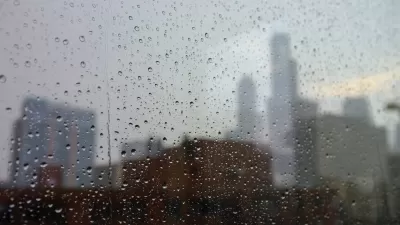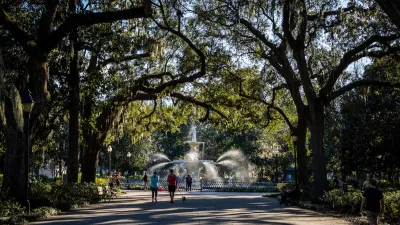In theory, cities might be able to revitalize their economies and infrastructure. But in reality, state governments can create all kinds of obstacles to city policy.
I just finished reading a new book by Bruce Katz and Jennifer Bradley, The Metropolitan Revolution. This book discusses a wide variety of municipal policies designed to spur economic innovation (as well as economic development initiatives by private foundations and other nonprofits).
Katz and Bradley seem to have done their homework, and their book may be valuable to planners and philanthropists looking for ideas. Having said that, their book strikes me as slightly too optimistic. The book's web page states that cities "are reshaping our economy and fixing our broken political system." And where governors and state legislators get out of the way, this description might turn out to be accurate.* But in fact, there is a lot that states can do to sabotage this "revolution."
Because states are in control of state highways and transportation departments, they can limit cities' potential by following the sprawl-oriented policies of in the 1950s. For example, Texas is building Houston's third beltway in order to spur development 25 miles from downtown Houston, and Indiana and Kentucky have agreed to build two new bridges through downtown Louisville, thus making it easier to commute from Indiana to Louisville. The highways of the 1950s opened suburbia for development, thus redistributing people from city to suburb and reducing urban tax bases. I see no reason why similar policies will be any more beneficial in this century. Unfortunately, state politicians have a strong incentive to smash roads through downtowns, because road-builders(unlike transit authorities) give money to campaigns.
States can more directly wage war against municipal tax bases by dictating which taxes a municipality can impose. One particularly common tactic is to cap muncipal property taxes; such "reforms" are popular not only among conservatives, but also among Democrats such as New York's Gov. Cuomo (who persuaded the New York legislature to enact a property tax cap). Such tax caps limit municipal flexiblity to improve public services or adjust to economic change. So why are they popular? Because if a governor limits municipal taxes, he or she may get the best of both worlds politically: credit for cutting taxes, without blame for cutting services. If services are cut, voters will blame the city councillors who voted for the cuts rather than the governor who foreclosed alternatives to the cuts.
Where the state and major cities are controlled by different political parties, governments may limit cities' options for political reasons: for example, in North Carolina, the State Senate voted to take control of Charlotte's airport away from the city of Charlotte, in order to give Republican-leaning suburban counties more power.
And of course, states may also impose costly liabilities upon cities. New York's Taylor Law forces municipalities to arbitrate differences with some municipal unions, thus increasing labor costs. Even without state interference, city governments might be too broke to innovate very much, because many cities decided to raise city workers' pensions in the past, leading to huge pension liabilities now that the population is aging and the retiree population is increasing.
In sum, municipal governments may be planning on a "revolution"- but without state cooperation, they will be lucky to avoid bankruptcy.
*Assuming that the policies discussed in the book are (1) worth pursuing and (2) important enough to make a significant difference in their cities' economic future. I leave this issue for another day.

Alabama: Trump Terminates Settlements for Black Communities Harmed By Raw Sewage
Trump deemed the landmark civil rights agreement “illegal DEI and environmental justice policy.”

Study: Maui’s Plan to Convert Vacation Rentals to Long-Term Housing Could Cause Nearly $1 Billion Economic Loss
The plan would reduce visitor accommodation by 25% resulting in 1,900 jobs lost.

Planetizen Federal Action Tracker
A weekly monitor of how Trump’s orders and actions are impacting planners and planning in America.

Wind Energy on the Rise Despite Federal Policy Reversal
The Trump administration is revoking federal support for renewable energy, but demand for new projects continues unabated.

Passengers Flock to Caltrain After Electrification
The new electric trains are running faster and more reliably, leading to strong ridership growth on the Bay Area rail system.

Texas Churches Rally Behind ‘Yes in God’s Back Yard’ Legislation
Religious leaders want the state to reduce zoning regulations to streamline leasing church-owned land to housing developers.
Urban Design for Planners 1: Software Tools
This six-course series explores essential urban design concepts using open source software and equips planners with the tools they need to participate fully in the urban design process.
Planning for Universal Design
Learn the tools for implementing Universal Design in planning regulations.
Caltrans
Smith Gee Studio
Institute for Housing and Urban Development Studies (IHS)
City of Grandview
Harvard GSD Executive Education
Toledo-Lucas County Plan Commissions
Salt Lake City
NYU Wagner Graduate School of Public Service





























